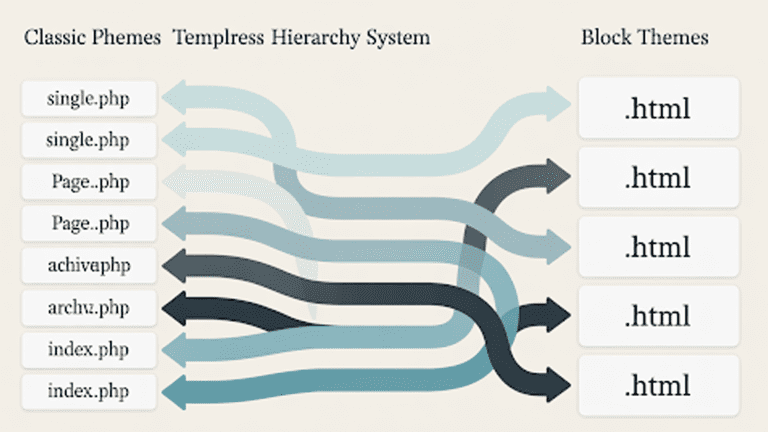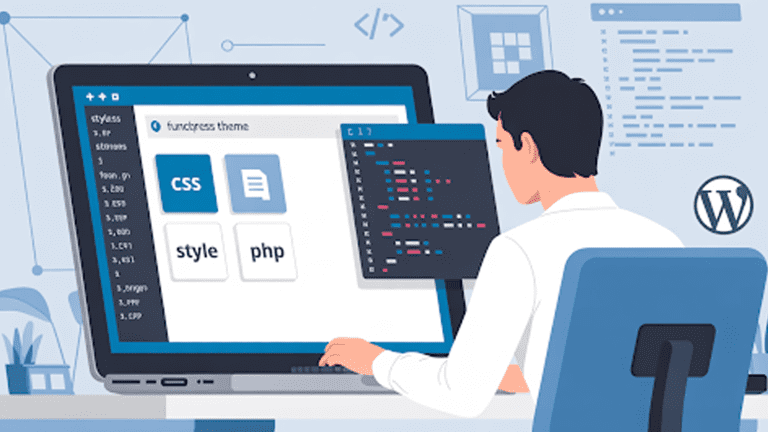Your website is getting slower. Pages take forever to load, users are bouncing, and technical issues piling up. So you finally decide it’s time for an upgrade. But since your site runs on Angular, even the simplest fixes look complex. That’s when the real question hits you: was Angular ever the right choice?
Angular is still a powerful framework when used correctly, and with the right Angular website design service, you can get things back on track. But if you’re feeling boxed in, it might be time to explore better options. In this blog, we’ll walk through the top Angular alternatives that could give your site the performance and flexibility that it really needs.
What Is Angular and Why Developers Are Searching for Alternatives
Angular is a popular open-source front-end framework by Google, built for creating dynamic web apps and single-page applications (SPAs).
While it powers over 246,000 active websites today, it’s not always the right fit, especially for projects where performance, simplicity, or flexibility matters.
With its steep learning curve, complex build process, and slower load times, Angular can quickly become a roadblock. That’s why in 2025, more teams are switching to faster, more lightweight alternatives.
Below, you’ll find the top Angular alternatives and how Pure Website Design can help you build a smarter, more scalable website without all the complexity.
Tell Us What You Need – Start Your Journey Today!
Share your project requirements, and we’ll guide you through a seamless development journey to bring your ideas to life.
What Are the Angular Alternatives: Quick Overview
- React: A flexible UI library by Meta with a huge ecosystem and fast rendering through the virtual DOM.
- Vue.js: A beginner-friendly framework that blends the best of Angular and React with simple syntax and strong documentation.
- Svelte: A compiler-based framework that delivers lightning-fast performance and requires less code.
- Ember.js: A full-featured framework built for large-scale applications with strong conventions and built-in tools.
- Backbone.js: A lightweight, minimalist framework ideal for simple apps or legacy projects needing basic structure.
- Preact: A tiny (3KB) alternative to React that offers nearly the same API and better performance for smaller apps.
- Lit: A modern library by Google for building fast, reusable web components with native browser support.
- Alpine.js: A lightweight JavaScript framework for adding simple interactivity directly in your HTML—ideal for small features.
- Mithril: A fast and compact framework designed for building single-page applications with minimal overhead.
- Aurelia: A modular, ES6-friendly framework focused on clean syntax and strong two-way binding.
Why Consider Alternatives to Angular?
Angular is powerful, no doubt. But power alone doesn’t make it the best tool for every job. Here’s why teams often look elsewhere:
- Steep learning curve for beginners.
- Too much boilerplate code.
- Slower performance compared to leaner frameworks.
- Requires ongoing expert support to keep up.
This is where Pure Website Design steps in. If your team lacks Angular expertise or you’re tired of wasting time on trial-and-error coding, Pure Website Design builds responsive, scalable, and beautifully structured Angular websites or offers clean migration to better-suited platforms — fast, efficient, and SEO-optimized.
In-Depth Look: The 10 Best Angular Alternatives
1. React
React is developed by Meta and remains one of the most widely used JavaScript libraries for building user interfaces. It focuses on building UI components, giving developers the freedom to choose other libraries for routing, state management, and server-side rendering. React’s design encourages a modular, component-based approach, allowing developers to reuse elements and build scalable applications.
It has powered countless well-known platforms such as Facebook, Instagram, WhatsApp, and Netflix. The rich ecosystem around React gives it a unique advantage. With thousands of libraries and community-driven resources, there’s a plugin or solution available for nearly every problem you might face during development.
What Makes It Good:
- Component-based structure.
- Virtual DOM for faster rendering.
- Huge community support.
Pros:
- Lightweight and fast.
- Easy to integrate with other libraries.
- Massive ecosystem.
Cons:
- Not a complete framework.
- Requires additional tools for routing and state management.
2. Vue.js
Vue is often described as the most beginner-friendly framework while still offering advanced features. It’s lightweight, fast, and blends the best of Angular and React without the heavy structure. Created by Evan You, a former Google engineer, Vue has rapidly gained popularity for its ease of use and flexibility.
Vue supports templates that look like plain HTML but are enhanced with reactive data binding and directives. It’s especially popular in Asia and Europe and is gaining traction in North America.
What Makes It Good:
- Gentle learning curve.
- Two-way binding like Angular.
- Clear documentation.
Pros:
- Lightweight and easy to understand.
- Great for small and medium projects.
- Active community.
Cons:
- Limited big-brand adoption.
- Can feel too flexible, leading to inconsistent code.
3. Svelte
Svelte is different from traditional frameworks. Instead of using a virtual DOM, it compiles code to optimized JavaScript during build time. That leads to leaner apps and faster performance, especially for applications with real-time updates or limited resources.
Created by Rich Harris, Svelte emphasizes writing less code and achieving more. It allows you to build highly reactive interfaces without the overhead of runtime interpretation.
What Makes It Good:
- No virtual DOM.
- Fast performance out of the box.
- Less code to write.
Pros:
- Simpler syntax.
- Faster runtime.
- Less overhead.
Cons:
- Still growing in adoption.
- Fewer available resources compared to React or Vue.
4. Ember.js
Ember offers an opinionated, full-stack framework with everything built-in — from a robust CLI to data management, routing, and state handling. It was designed for ambitious web applications that require long-term support and structured coding practices.
Ember relies on strong conventions and provides a complete solution for large-scale app development, making it attractive to enterprise developers.
What Makes It Good:
- Convention over configuration.
- Built-in router and CLI tools.
Pros:
- Everything included.
- Productivity-focused.
- Stable long-term support.
Cons:
- Heavy.
- Slower than lightweight alternatives.
- Steeper learning curve.
5. Backbone.js
Backbone.js is one of the oldest JavaScript libraries still in use today, and while it doesn’t get the hype it once did, it’s still a solid choice for simple or legacy applications. It follows the MVC architecture and gives developers a light layer of structure over jQuery.
What Makes It Good:
- Minimalist design.
- Flexibility to pair with other tools.
Pros:
- Lightweight.
- Simple to grasp.
- Plenty of legacy support.
Cons:
- Lacks structure.
- Feels outdated.
6. Preact
Preact is like React’s smaller sibling. It offers nearly the same API but in a much smaller package, making it a great fit for performance-sensitive environments like mobile web apps or embedded widgets.
What Makes It Good:
- Fast and lightweight.
- Great for performance-critical apps.
Pros:
- 3KB size.
- Compatible with most React libraries.
- Easy migration from React.
Cons:
- Slight differences from React.
- Smaller community.
7. Lit
Lit, developed by Google, is built around modern Web Components. It allows developers to build fast, reusable components with a minimal footprint, using familiar tools like HTML, JavaScript, and CSS. Because Lit is built on standard web APIs, it avoids lock-in and encourages long-term maintainability.
Unlike traditional frameworks, Lit doesn’t attempt to reinvent the way you write JavaScript. It enhances native features instead, which makes it lightweight and surprisingly easy to integrate into existing projects even those not originally built with Web Components in mind.
Lit is especially effective when building design systems or shared component libraries. It excels in use cases where performance and encapsulation are critical, like enterprise UI kits, micro frontends, and embedded widgets.
What Makes It Good:
- Lightweight.
- Uses native web components.
Pros:
- Great performance.
- Standards-based.
- Reusable components.
Cons:
- Newer, less adoption.
- Steeper integration for larger projects.
8. Alpine.js
Alpine.js gives you the reactivity of Vue or Angular in a much smaller package, directly inside your HTML. Think of it as jQuery reimagined for modern front-end development. It’s tailor-made for developers who love Tailwind CSS and want to keep JavaScript minimal.
Alpine enables developers to add interactivity like toggles, modals, and tabs without a complex toolchain. You write reactive expressions directly in your HTML markup using simple syntax, so there’s no need for a separate JavaScript file or framework setup.
It’s perfect for Laravel or Rails projects, or anywhere you want to sprinkle interactivity into static pages or server-rendered templates.
What Makes It Good:
- Tailwind’s companion for interactivity.
- Small footprint.
Pros:
- Lightweight.
- Great for smaller features.
- Easy syntax.
Cons:
- Not for complex apps.
- Limited ecosystem.
9. Mithril
Mithril is a modern JavaScript framework that prides itself on being tiny and fast. It’s built for SPAs and excels at keeping things clean and efficient. If you want to create performant, maintainable single-page applications without the overhead of bigger frameworks, Mithril is worth considering.
The syntax is clear, routing is built in, and everything stays small — even the learning curve. It’s one of the fastest frameworks in terms of startup and rendering time, which makes it ideal for dashboards, admin panels, and content-heavy interfaces.
What surprises most developers is how powerful Mithril feels despite being so compact (~8KB gzipped). It supports modern features like components, lifecycle hooks, and async request handling — all without unnecessary fluff.
What Makes It Good:
- Simple and fast.
- Built-in routing.
Pros:
- Tiny footprint.
- Clear documentation.
- No dependencies.
Cons:
- Niche usage.
- Less community support.
10. Aurelia
Aurelia is built with a focus on clean architecture and modern web standards. It’s often praised for its use of vanilla JavaScript and reliance on simple conventions, rather than heavy configuration files. If you care deeply about clean code, scalability, and testability, Aurelia might be your ideal Angular alternative.
The core philosophy behind Aurelia is to reduce boilerplate and empower developers to write business logic, not framework code. It uses ES6+ features, supports TypeScript natively, and allows seamless two-way data binding with zero third-party dependencies.
Aurelia has been used in many enterprise applications and is considered highly maintainable in the long run. Its modularity means you can use only what you need whether that’s routing, dependency injection, or binding.
What Makes It Good:
- Strong conventions.
- Two-way binding.
Pros:
- Clean syntax.
- ES6-friendly.
- Modular.
Cons:
- Not as popular.
- Smaller dev community.
React vs Vue vs Angular: Feature Comparison
| Feature | Angular | React | Vue |
| Type | Framework | Library | Framework |
| Learning Curve | Steep | Moderate | Easy |
| Size | Large | Medium | Small |
| Flexibility | Low | High | High |
| Speed | Moderate | Fast | Fast |
| Data Binding | Two-way | One-way | Two-way |
| Community Support | Strong | Massive | Growing |
React vs Vue vs Angular, are supposed to be top farmworks that developers use to create the smooth applications.
Why You Should Work with Pure Website Design
Still unsure what fits best? That’s where Pure Website Design shines. We don’t just build Angular websites, we guide you to the right tech. Whether that’s Vue for speed, React for flexibility, or Svelte for simplicity, we get your site running fast, clean, and optimized for real business impact.
We’ve helped dozens of teams move from complex Angular setups to leaner, cleaner alternatives with zero downtime and better SEO. It’s not just about code. It’s about results.
Frequently Asked Questions
What should I use instead of Angular if I already built part of my project in Java?
You should consider React or Vue as reliable replacements for Angular. These frameworks integrate well with Java-based backends and offer cleaner, more flexible tooling. I’ve seen teams cut build time and improve performance just by switching.
Why do developers feel Angular is too heavy for small applications?
Angular has a large footprint, loads of boilerplate, and a steeper learning curve. If you’re building a smaller or medium-sized app, something like Svelte or Preact will feel much lighter and faster. You’ll write less code and still get solid results.
What makes React a better alternative to Angular for most teams?
React is easier to learn and lets you choose your tools. It’s faster and has a huge ecosystem of libraries. I’ve worked with teams who reduced onboarding time just by switching from Angular to React.
Will AI replace Angular developers or frameworks altogether?
AI isn’t replacing developers anytime soon. It just speeds up the repetitive stuff like testing or writing boilerplate. You’ll still need to choose the right framework, write logic, and make architecture decisions — AI just becomes your coding assistant.
Why do so many site owners struggle to find Angular experts today?
Because Angular isn’t the first choice for new developers anymore. Most people now learn React or Vue. If you’re struggling to maintain an Angular site, Pure Website Design can take over your project or migrate it for better performance.
How does Pure Website Design help if I don’t know what alternative to pick?
We work with your business goals first, not just the tech stack. You can outsource your website hosting and our team reviews your current setup, recommends the best-fit frontend (whether it’s React, Vue, or something else), and handles the migration cleanly.
What kind of Angular alternatives do Pure Website Design recommend the most?
React, Vue, and Svelte come up most often — especially for projects that need speed, SEO, and low dev overhead. We’ve helped several clients move from outdated AngularJS or bulky Angular 10+ projects to faster stacks.
Why is Angular losing popularity so fast in 2025? Why is Angular losing popularity so fast in 2025?
Because newer tools like React and Vue are easier to learn, faster to build with, and require less setup. You don’t need an army of devs or a full DevOps team just to get a clean UI working.
What if I already have a part-Angular, part-jQuery setup is switching worth it?
Yes. Hybrid stacks often slow down teams and cause bugs. Moving to a single modern framework makes maintenance easier and performance smoother. Frameworks like Svelte or React help unify the workflow and cut out legacy overhead.
Can I switch from Angular without breaking my current SEO or user experience?
Absolutely. With the right plan and support, like what Pure Website Design provides, you can migrate to a new frontend without losing SEO rankings or hurting UX. We focus on preserving your site structure while speeding it up.
Final Thoughts
Angular is powerful, but it’s not always the best fit. Today’s developers and site owners have more choices than ever. Whether you’re building a new app or improving an existing one, don’t settle. Explore your options.
From React to Vue to Svelte and beyond, every Angular alternative has something valuable to offer. And if you want expert help choosing, building, or migrating, Pure Website Design is just one call away.




